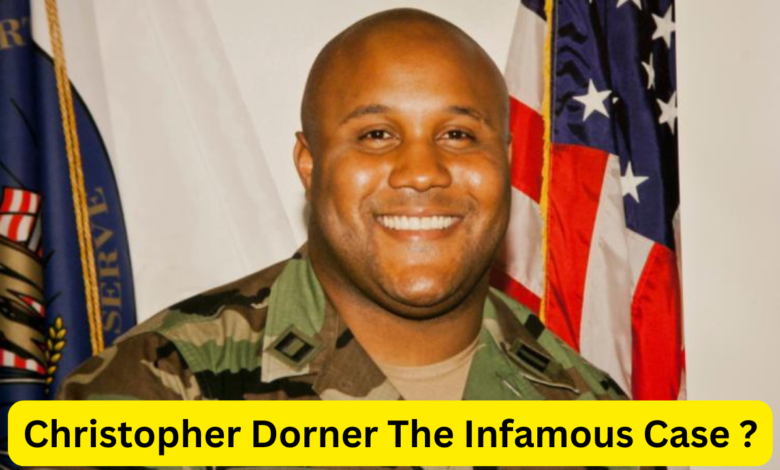Christopher Dorner The Infamous Case ?

The Infamous Case of Christopher Dorner, Look at the LAPD’s Response, In early 2013, the city of Los Angeles was gripped by fear as former LAPD officer Christopher Jordan Dorner embarked on a killing spree that would leave several dead and many more in fear. The case of Christopher Dorner stands out not just for the violence and chaos he unleashed but for the intense scrutiny it brought upon the Los Angeles Police Department (LAPD). This article delves into the details surrounding Christopher Dorner, the LAPD’s response, and the broader implications for law enforcement and public safety.
Who Was Christopher Dorner?
Christopher Dorner was a former LAPD officer who was honorably discharged from the U.S. Navy. However, his life took a dark turn after he was dismissed from the LAPD in 2009 for allegedly making false statements against his training officer. Dorner claimed that he was unjustly fired and that his dismissal was the result of a culture of corruption and racism within the LAPD.
Dorner’s Manifesto: A Declaration of War
Before launching his deadly rampage, Dorner posted a manifesto online, in which he declared war against the LAPD. The manifesto detailed his grievances against the department, accusing it of systemic corruption and racism. He vowed to target LAPD officers and their families, believing that his actions were a necessary form of justice.
The Killing Spree Begins
Dorner’s first victims were the daughter of a former LAPD captain and her fiancé, who were shot and killed in Irvine, California. This marked the beginning of a week-long manhunt that would see Dorner travel across Southern California, committing multiple murders and engaging in shootouts with law enforcement.
LAPD’s Press Conference: A City on Edge
As the manhunt for Dorner intensified, the LAPD held a series of press conferences to keep the public informed and to assure them that every effort was being made to apprehend the fugitive. The department also took the unprecedented step of reopening the investigation into Dorner’s dismissal, acknowledging the seriousness of his allegations.
Christopher Dorner’s Gun and Tactics
Dorner’s military background gave him an advantage in evading capture and engaging law enforcement. He was heavily armed and trained in guerrilla tactics, which made him a formidable opponent. His use of high-powered firearms and knowledge of police procedures further complicated the efforts to bring him to justice.
The Manhunt and Final Standoff
The search for Dorner culminated in a dramatic standoff in the San Bernardino Mountains, where he was eventually cornered in a cabin. After a lengthy shootout, the cabin was engulfed in flames, and Dorner’s charred remains were later found inside. The manhunt was over, but the questions it raised about the LAPD and law enforcement tactics were just beginning.
LAPD’s Response: A Department Under Scrutiny
In the aftermath of the Dorner case, the LAPD faced intense criticism for its handling of the situation. Questions were raised about the department’s initial response to Dorner’s allegations, as well as its tactics during the manhunt. The case also reignited debates about police conduct, use of force, and the relationship between law enforcement and the communities they serve.
Public Reaction and Media Coverage
The Christopher Dorner case captured the attention of the nation, with extensive media coverage that often sensationalized the events. The public was divided, with some viewing Dorner as a martyr fighting against a corrupt system, while others saw him as a dangerous criminal who needed to be stopped at all costs.
Legal and Ethical Implications
The Dorner case also had significant legal and ethical implications. It raised questions about the rights of whistleblowers, the responsibilities of law enforcement agencies, and the extent to which individuals can take the law into their own hands. These issues continue to be debated today, as society grapples with the balance between justice and security.
The Legacy of Christopher Dorner
More than a decade after the events of 2013, the legacy of Christopher Dorner remains a controversial and complex topic. His actions have left a lasting impact on the LAPD and have contributed to ongoing discussions about police reform and accountability. The case serves as a stark reminder of the potential consequences when grievances are left unaddressed and when the trust between law enforcement and the public breaks down.
Conclusion
The Christopher Dorner case is a tragic chapter in the history of the LAPD, marked by violence, fear, and controversy. It highlights the challenges and complexities of policing in a diverse and dynamic society. As the LAPD continues to evolve and reform, the lessons learned from the Dorner case will hopefully contribute to a more just and effective approach to law enforcement.




One Comment